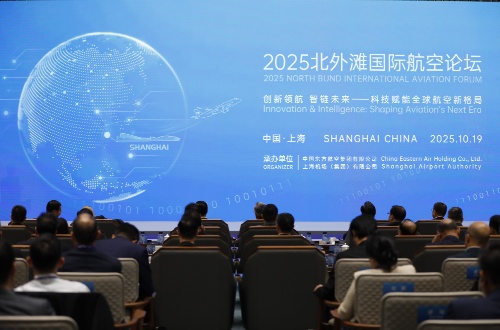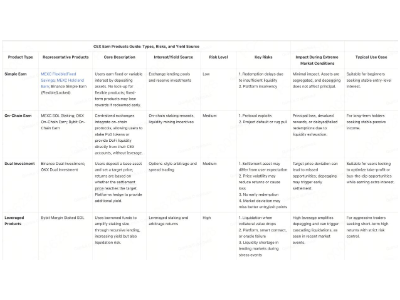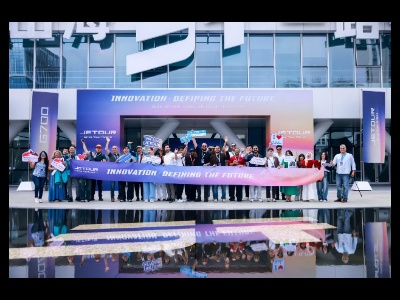10-22
One Billion People's Livelihood-Trend of Food and Beverage Consumption in the Sinking Market
 2020-12-15
2020-12-15
One Billion People's Livelihood-Trend of Food and Beverage Consumption in the Sinking Market
As the growth space brought by the young populations and overseas markets is affected by such factors as epidemics, opportunities in the sinking market are being given increasing attention to. Why does the sinking market have the broad growth space? Where does the current growth points come from? How to seize the growth opportunity of the sinking market?
Growth Space of the Sinking Market
The sinking market is very broad, especially during the outbreak. I believe that business in the first half of this year will be greatly affected; GDP fell 6.8% in the first quarter; the predicted value of the second quarter is expected to turn positive, to 2%-3% or so; if there is no major change, the full-year business is expected to be in the range of 1%-3%.
Even numbers as such turn out to have fallen considerably in comparison with the previous time. Now that China's epidemic is under control, the main concern is: where will the growth come from in the second half of the year?
In terms of the growth opportunities, we've been focusing on the growth in three areas-young groups, sinking markets and overseas markets. Unfortunately, both in the long term and in the medium term, some problems arise on two of these three growth points, such as overseas markets. The outbreak is now serious and international relations are increasingly complex, making it harder than ever to run a business overseas. From the perspective of the medium term, the young groups are also greatly affected by the outbreak; now a very obvious phenomenon arises, that is, the original individual consumption turns to the family consumption: you can neither go out nor go offline entertainment; now the entertainment business is just beginning to recover but the recovery also needs a certain buffer period.
The impact on the sinking market is relatively small. As the development of China's epidemics, the impact on the sinking market is relatively minimal and with the outbreak proceeding, consumers in the sinking market generally began to connecting the Internet; even a major trend of rebound was formed. Therefore, the sinking market is the most potential point among these three growth points, which is the reason why today's topic chosen to share is about the sinking market.
How deep is the sinking market? Places below the third-tier cities are called the sinking market; the third-tier cities refer to the prefecture-level cities, the fourth-tier cities the counties, the fifth-tier cities the towns, the sixth-tier cities the villages; the lowest tier is the sixth-tier cities; the market from the third-tier cities to the sixth-tier cities is the definition from Wikipedia.
The sinking market is very important and its room is presented in three aspects:

Firstly, the population. The total number of the first and second-tier cities is only 49; you can see the data on the right side. What is the number of cities from the prefecture-level cities to the towns; why today's theme is "1 Billion People's Livelihood"? With a total population of 1 billion, accounting for more than 71% of China's total population, equal to almost three times the population of United States and the number of mobile Internet citizens reached 74%, it comprises almost the majority of China's population, so the population is very large.

Secondly, consumption time, consumption power. Now the concept of consumption power is not only the consumption power in money, but also the consumption of time; time of the sinking market consumers is fairly much so that the time they spend every day in entertainment and tutoring children, shopping and housework is far more than the First and Second-Tier cities. People in the First and Second-Tier cities spend much time on study and transportation and time on entertainment is relatively limited. Consumers in the sinking market have a lot of time to spend.

Thirdly, the relative abundant money. Why is it "relative"? The survey data of the DATA 100 shows the per capita disposable income of the First and Second-Tier cities, except for the mortgage and car loans is about 7800 yuan, the Third and Fourth-Tier cities, namely prefecture-level cities and counties 4200 yuan, towns and villages 3500 yuan. It is still much less, so it is relatively sufficient. Why is it relative? Because it is much less. Why is it sufficient? Don't ignore two points, one is that people in the sinking market have very little pressure in buying a house. Most possess a house bought by their family or live with parents with 43% living with their parents yet only 27% of the people in the First and Second-Tier cities. The other point is that prices are relatively low. If we remove the cost of transportation and rents in the First and Second-Tier cities, the actual cost of consumption is higher but not too much than the third-tier cities.
So from the three perspectives of people, time and money, the Third and Fourth-Tier sinking markets have very big room.
So how to run the business of this one billion-people? How can we make good use of these one billion people for future growth?
Insight into the Sinking Market Trend

This is the three-dimensional insight drawing of the sinking market. How to study the sinking market? When we look at a market, we can't just look at one-dimensional data but we choose three-dimensional data to read.
Firstly, we will study the people in the sinking market and his attitude data, that is, what he thinks, including his usual lifestyle, consumption pattern and demand pattern;
Secondly, the behavior data obtained by the method of monitoring. What does he do every day? Such as what App. does he use? How often does he use it every day? How long does he use it each time and how much time does he spend on it totally? These can reflect his living conditions and where he spends his time;
Thirdly, the consumer data on what he buys, such as brand preferences, category preferences and billing data. If we have a market and the attitude data, behavior data and consumption data of a population, we can see through a very person's domain. With such a three-dimensional insight, you can better understand the market, which is the overall methodology.

I would like to introduce you to a product and tool for data insight--DATA 100 Pinrenwu App, on which its 5 million members will complete the tasks such as questionnaires given to them. We will collect the attitude data in the form of questionnaires. As for the behavioral data, they'll take a monitoring task that will authorize us to see some of his mobile phone usage behaviors, which, of course, is authorized and perceptible and not senseless.
In the case of consumption data, we will collaborate on data with some of the big data companies or e-commerce companies and we will also provide some order data identification. The order data is a bit like allowing these members to take a screenshot of the e-commerce purchase order or to shoot the shopping receipts by recording the screen and the goods are identified through AI technology. The previous Luckin Affair was found wrong in order data by MuddyWate through orders and receipts, which is a very effective way to find out people's real consumption behavior.
With such methodologies and techniques, four major trends of the sinking market were concluded through four-dimensional insight:
Firstly, the media trend, there is an Internet entertainment explosion;
Secondly, the channel trend, online shopping turns into the mainstream;
Thirdly, there is a large upgrade of the consumption breadth in the product trend;
Fourthly, there is a subtle upgrade of the consumption quality in the product trend.
Let's analyze respectively what these four trends represent.
There is an explosion of Internet entertainment, which means the behavior data and some attitude data will be more applied.

The first is attitude data. These are photos uploaded by some of our members of their hometowns, that is, their living environment. From the top to the bottom are the photos of the high-tier cities to the low-tier cities.
Through such a survey, you can see a phenomenon: there are shopping centers in every sinking market and even the offline retail sales store is pretty good so their hardware is not bad, that is, shopping, hotels-even including some 4-star hotels are satisfying; there are high-end residential areas. But the offline software is too bad with very few entertainments, catering, fashion and leisure facilities, their main way of leisure being KTV rather than a wholesale type KTV but the other type, so the offline lifestyle is very scarce. What does this scarcity lead to? Especially during the COVID-19 outbreak, it could lead to an on-line burst.

Taking the data as evidence, we can see how it bursts online. This is the behavioral monitoring data, the TGI index of all the App. usage situations. If this data is greater than 1, it means more people is using App. in this level of urban city, less than 1 less people using App.. The stronger areas in the sinking market citities are framed out, all entertainment products. We are more familiar with the short video, digital reading, live broadcast, music, photograph and retouch, mobile phone games, network KTV. The 12 strong areas are mainly fresh food e-commerce, real estate, taxi, travel, touring, local life, job hunting and recruitment, financial management, Wechat-shop, news information, most of which are related to the money and houses. When people are fed up with earning money and working for houses, they would spend more time to travel or go to the fresh e-commerce to improve life.
People in the sinking market cities have a lot of time with nowhere to spend, so they spend a lot of time on entertainment. From the perspective of product attributes, more people in the first-tier cities use time-saving products while the people in the lower-tier cities use time-consuming products.
K12 and pre-school education is on the rightest side, which is related to the inability of attending offline classes during the outbreak. After all, people in the first-tier cities used to have some offline approaches of it. Of course, most people in the sinking market cities have children yet a lot of people in the first-tier cities have no children.
The first trend, as the explosive growth of Internet entertainment tells us, is that we need to use Internet entertainment products, of which both content and product itself should be entertaining, to reach and influence customers in the Sinking market. Only by doing this can we meet their needs and adapt their relatively monotonous offline lifestyle and the developed local network, one in relation to the media.

Through the perspective of multi-dimensional survey, if market channels are related to online shopping, some people may doubt would the sinking market be big enough? According to the TGI Index of e-commerce Apps. usage, there is no difference between the First and Second-Tier, the Third and Fourth-Tier, and the Fifth and Sixth-Tier.
Let's take a look at what Apps. and shopping channels they use. It is clear that although the sinking market has less channels to choose from, it shares the same integrated platforms such as Taobao, Jingdong, Tmall, Pinduoduo with First and Second-Tier markets. However, the sinking market has a preference for Jingxi, Taobao special offer, Vip.com, Xiao hongshu, while higher-tier cities have more options such as Yonghui superstores, Jingdong freshOwhat and so on.

Look at the data again: The more to the left First and Second-Tier city located, the stronger it is, and the more to the right Third and Fourth-Tier city located, the stronger it is, the data of group-buying and integrated e-commerce as well as the TGI index is also slightly higher. For those fresh food e-commerce, e-commerce of choicest goods and cross-border e-commerce, which are mainly operated in First and Second-Tier cities now, if they want to reach the lower-tier cities, they should more resort to integrated and group-buying e-commerce.
As for short video platforms, their data in sinking market are slightly better. With Instant Music Video nowadays being available for shopping, the TGI index of kuaishou, Tik Tok and the like in the sinking market is a little bit higher. Meanwhile, VIP.com also sees higher TGI index in sinking market due to its low price of special offers. So we should pay attention to e-commerce related to short videos with entertainment content, as well as special-offer e-commerce.
So isn't that we just need to focus on e-commerce? The answer is negative. There are totally three types of booming channels in the sinking market: grocery stores, roadside stalls and bazaars. As for roadside stalls, we are now all talking about the roadside economy, which refers to not just the street stalls. As we can see, pictures of sinking market are all related to stores on the prosperous roadside, shopping center, however, is very rare. So we should seize the opportunity of the roadside economy if we want to focus on off-line channels.
Therefore, judging from the second trend -- the dominance of online shopping in the sinking market, and in order to develop the sinking market, we should give priority to the three major integrated e-commerce andgroup-buying e-commerce, and pay appropriate attention to Instant Music Video and special-offer e-commerce, meanwhile make efforts to develop offline roadside economy. This is the characteristics of the channel.
Let's take a look at the products. Products in sinking market have two features, one of which is big upgrade of consumption span. What is the consumption span big upgrade? In our study of consumption data, we looked at 11 subcategories and 57 categories to observe the distribution of different items ranging from current penetration rate to future growth, as well as to see what categories or how many categories have potential in terms of future growth.



This is the chart of all 57 categories. After comparing these categories, we found that regardless of what product it is, by observing the shape, we can see a very obvious feature: the deeper it goes into the sinking city, the higher its growth potential would be Just take a few examples, carbonated beverage is in Fifth and sixth-tier city is high-growth category in future. As for dairy products, while ultra-high temperature treated milk, has higher growth potential in Fifth and sixth-tier city, low-temperature milk products have more room to grow, together with instant drinks, wine, snack food and instant food category.

The revelation of consumption span development shows that due to the lack of offline entertainment activities and, the relatively monotonous product categories for them to choose, upgrade of consumption in breadth and diversification is what the consumers in sinking market need rather than an upgrade in depth or in product level. Take beef consumption, customers there used to live without beef and now they have access to beef or even steak, which showcases that availability of more products enriches their consumption choices, and hence lifestyle.
• The last factor related to product is small upgrade of consumption quality.
Insatiable customers in First and second-tier cities complain about not having enough products for them to choose, while their counterparts in Third and Fourth-tier and Fifth and sixth-tier cities have been roasting the market for poor product quality and high price respectively. Therefore, in addition to the demand for a lower price, the upgrade of product is also what customers ask for.

Judging from the demand map, be it the Third and Fourth-tier or fifth- and sixth- tier cities, they both have a relatively high demand for cost-effectiveness, thus relatively high cost-effective and high qualified products are in great demand.
The small upgrade of quality shows that we should pay more attention to the extent of the upgrade than to the quality, and at the same time keep the upgrade at a low price.
How to seize the opportunity of the sinking market?

So the whole upgrade movement goes like this: from nothing to something, from something to more, from more to better, and from better to less. In this process, sinking market cities is in the stage of having more, the First and second-tier cities of having better, while the elite in the First and second-tier of wanting to have less.

Above all, let me summarize these 4 market trends and give you my suggestions: to develop the sinking market, products need to further enrich the market category, enrich the micro-upgraded SPU (Standard Product Unit); channels come to "3 major comprehensive e-commerce + group-buying e-commerce + Instant Music Video + special sales", make the layout of the offline roadside channel; as for the dissemination, use entertainment products and combine entertainment contents with the advertising.

DATA 100 is a market research company that has been operated in China for nearly 15 years. We use a digital way to see the market and supported by our precise sample and technology platforms, we transform the single survey data into the 3-D data; we integrate the research data, behavior data into the consumption data to form the business insight.At the same time, we have a relatively rich accumulation of research experience in the field of food and beverage and consumer goods.
https://www.data100insight.com/
mkt@data100.com




